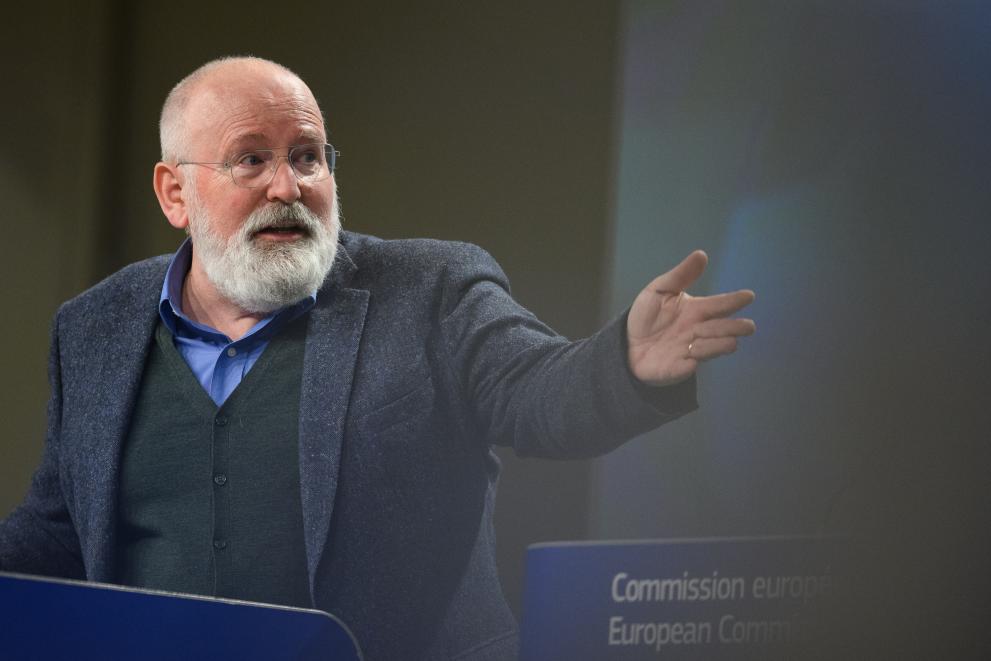
These projects aim to reduce emissions by over 76 Mt of CO2eq during the first ten years of operation. The seven projects are deploying innovative low-carbon technologies at industrial scale, covering key sectors such as hydrogen, steel, chemicals, cement, solar energy, biofuels, and carbon capture and storage.
Executive Vice-President for the European Green Deal, Frans Timmermans, said: “With the Innovation Fund, the European Commission is granting €1.1 billion to empower innovative, forward-thinking businesses that develop cutting-edge technologies and drive the climate transition in their respective fields. This is a smart investment into the decarbonisation and resilience of our economy; it boosts European industry's position as global leaders in clean tech, creates local jobs, and helps to accelerate our green transition.”
Director of European Climate, Infrastructure and Environment Executive Agency (CINEA), Dirk Beckers, said: “CINEA is proud to sign the very first large-scale projects under the Innovation Fund. With these projects, we demonstrate that the clean energy transition is already happening, while substantially reducing the greenhouse gas emissions brings economic opportunities for our project promoters. These projects represent highly innovative solutions in their sectors which should pave the way for others to follow.”
Projects in brief
Kairos@C: Located in the Port of Antwerp (Belgium), the Kairos@C project aims to create the first and largest cross-border carbon capture and storage value chain to capture, liquefy, ship, and permanently store CO2. Kairos@C will enable the deployment of several pioneering technologies that together have the potential to avoid the emission into the atmosphere of 14 Mt of CO2eq over its first ten years of operation.
BECCS at Stockholm: Located in Stockholm (Sweden), this project aims to create a full-scale Bio-Energy Carbon Capture and Storage (BECCS) facility at the existing heat and power biomass plant in Stockholm. Combining CO2 capture with heat recovery the project will avoid 7.83 Mt of CO2eq emissions during its first ten years of operation. This is more than the entire amount of greenhouse gas emissions from public sector electricity and heat production in Sweden in 2018.
Hybrit Demonstration: Located in Oxelösund and Gällivare (Sweden), the Hydrogen Breakthrough Ironmaking Technology Demonstration project (Hybrit Demonstration) aims to revolutionise the European iron and steel industry. It will replace fossil-based technologies with climate-neutral alternatives such as green hydrogen production and use. The project has the potential to avoid the emission of 14.3 Mt of CO2eq over its first ten years of operation. Moreover, it will use a technology associated with major climate benefits for the steel production sector.
Ecoplanta: Located in El Morell (Spain), this project will deliver a first-of-a-kind commercial plant for the European market, using waste that would otherwise end up in landfills. The plant will produce 237 kt/y of methanol, and thereby recover 70% of the carbon present in non-recyclable materials. The project will avoid the emission of 3.4 Mt of CO2eq over its first ten years of operation.
K6 Program: Located in Lumbres (France), the K6 Program aims to produce the first carbon-neutral cement in Europe, becoming a representative project for the cement industry worldwide and supporting the clean energy transition of a hard-to-abate sector. The project will deploy a first-of-a-kind industrial-scale combination of an airtight kiln and cryogenic carbon capture technology with CO2 storage in the North Sea site that otherwise would be emitted to the atmosphere. This will result in the avoidance of 8.1 Mt of CO2eq emissions over its first ten years of operation.
TANGO: Located in Catania (Italy), the TANGO project will develop an industrial-scale pilot line for the manufacturing of innovative, high-performance photovoltaic (PV) modules. It will multiply production capacity by 15, up from 200 MW to 3 GW per year. Once in operation, the produced modules will have the potential to avoid up to 25 Mt of CO2eq emissions over the first ten years. Moreover, the TANGO project will reinforce the value chain in the European upstream PV industry.
SHARC: Located at the Porvoo refinery (Finland), the Sustainable Hydrogen and Recovery of Carbon project (SHARC) will reduce greenhouse gas emissions by moving away from the production of fossil-fuel based hydrogen towards both renewable hydrogen production (through the introduction of electrolysis) and hydrogen production by applying carbon capture technology. In the first ten years of operation, the SHARC project will avoid the emission of more than 4 Mt of CO2eq.
Background
Funded by revenues from the auction of emission allowances from the EU's ETS, the Innovation Fund aims to create the right financial incentives for companies and public authorities to invest now in the next generation of low-carbon technologies and give EU companies a first-mover advantage to become global technology leaders.
The Innovation Fund is implemented by the European Climate, Infrastructure and Environment Executive Agency (CINEA), while the European Investment Bank provides the project development assistance to promising projects that are not ready for full application. The Fund also provides small-scale grants. Yesterday, on 31 March, the second call for proposals was launched.
The Innovation Fund is currently sourced from 450 million allowances from the existing ETS in 2021-30. Under the European Commission's Fit for 55 proposals, it would be topped up with 50 million allowances from the revised ETS and 150 million allowances from the new system covering emissions from road transport and buildings. In addition, allowances which would otherwise be allocated for free to industry sectors covered by the Carbon Border Adjustment Mechanism would be auctioned and added to the Innovation Fund.
For More Information
Project description of successful large-scale projects
Details
- Publication date
- 1 April 2022
- Author
- Representation in Cyprus
